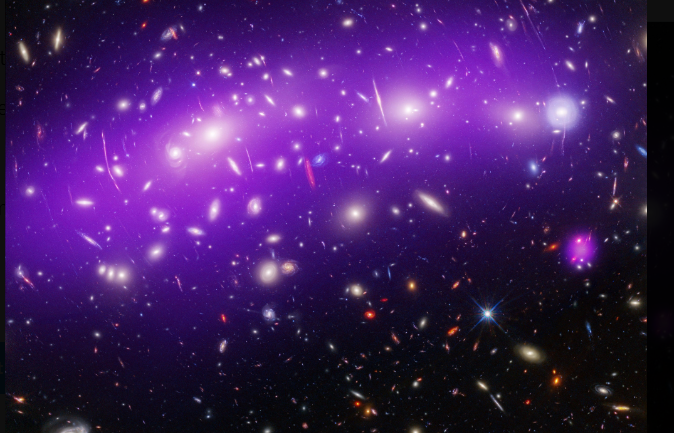When the James Webb Space Telescope (JWST) finally took flight on that crisp December day in 2021, it was not just another step towards space exploration— it carried with it some of the most pressing and unanswered questions about the universe. Among those mysteries was the fate of a distant, massive galaxy discovered as silent and seemingly ancient, and long past its days of creating new stars.
This galaxy, dubbed GS-10578 but often referred to as “Pablo’s Galaxy,” wasn’t just notable for its staggering mass— two billion times that of our Sun— but also because it had stopped forming stars so early in the universe’s life. While other galaxies around it were bustling with activity, Pablo’s had gone quiet between 12.5 and 11.5 billion years ago, leaving astronomers with a puzzle on their hands.
🚨JAMES WEBB TELESCOPE FINDS SUPERMASSIVE BLACK HOLE KILLING GALAXY BY STARVATION
The James Webb Space Telescope has observed a supermassive black hole in Pablo’s Galaxy, 11.5 billion light-years away, starving its host galaxy by ejecting gas at 2.2 million mph, preventing star… pic.twitter.com/s4Ssb5BVfn
— Mario Nawfal (@MarioNawfal) September 17, 2024
The life cycle of galaxies has long fascinated scientists about how they grow….how they age….and why they sometimes just stop. The so called star formation and the sudden halt in the process— astronomers often use the term “quenching” to describe this latter part. Central to this is the presence of supermassive black holes (SMBHs) sitting at the heart of most large galaxies. These black holes are more than just cosmic monsters— they influence their galaxies in several ways and every phenomenon is very profound regarding their characters. When they gather material, they heat it up, creating what’s known as an active galactic nucleus (AGN). These AGNs are bright, powerful, and can drive winds strong enough to push star-forming gases right out of their galaxies, effectively becoming a bar to star formation.
Now, thanks to the unparalleled capabilities of the JWST, astronomers finally got a closer look at how this plays out in real-time within Pablo’s Galaxy. With its ability to capture detailed images in the infrared spectrum, the JWST observed the galaxy in the throes of this quenching process. Cold, dense gas— the fuel for emerging stars— was being denied by the black hole’s fierce winds.
Francesco D’Eugenio, leading the research from Cambridge’s Kavli Institute for Cosmology, shed light on this discovery. While they had long suspected this galaxy had stopped creating stars, it was the JWST that provided the evidence, confirming that the powerful feedback from the black hole was driving the process. “We’ve found the culprit,” D’Eugenio remarked. “The black hole is essentially starving the galaxy, preventing it from making new stars.”
Pablo’s Galaxy stands out in the cosmic timeline. Most galaxies from its era were still brimming with star formation, making its quiescent state all the more perplexing. Co-researcher Roberto Maiolino noted, “To reach this size so quickly, and then stop forming stars so abruptly, means whatever halted star formation did so in a relatively short window.”
Una nueva imagen del JWST, son cúmulos estelares que se forman en las afueras de la Vía Láctea, ofreciendo un espectáculo de petardos, que recuerda a nuestra galaxia durante sus primeras etapas. 😍🔭
©️NASA, ESA, CSA, STScI, M. Ressler (NASA-JPL). pic.twitter.com/f0OYJCD2Tn
— Rosario in Paris ᥫ᭡ (@chayito09) September 12, 2024
What’s even more surprising is that, contrary to what models had previously suggested, quenching doesn’t necessarily result in a chaotic reshuffling of a galaxy’s structure. Pablo’s Galaxy has remained in order, remained in its righty disk shape— its stars moving in graceful, predictable orbits.
But this is only one story in the vast expanse of space. As exciting as this discovery is, it’s just the beginning. Pablo’s Galaxy provides a unique glimpse into how massive galaxies in the early universe may have lived and died. But questions linger: How many more galaxies share this fate? How often do these powerful outflows of gas occur? Are they the absolute force behind quenching, or just a part of a larger and more complex picture?
The James Webb Space Telescope has cracked open a window into the universe’s ancient past. As it continues to peer deeper into space, more of these mysteries will come to light, reshaping our understanding of how galaxies, like Pablo’s, rise, thrive, and sometimes quietly fade.
Major Points
- The JWST revealed Pablo’s Galaxy, which stopped forming stars early in the universe’s history.
- This galaxy, two billion times the mass of the Sun, went quiet between 12.5 and 11.5 billion years ago.
- Astronomers confirmed the quenching process, driven by fierce winds from a supermassive black hole, as the culprit behind halting star formation.
- Unlike other galaxies that might show chaos after quenching, Pablo’s retained its orderly disk structure.
- The discovery opens new questions about galaxy evolution and how many others share Pablo’s silent fate.
James Kravitz – Reprinted with permission of Whatfinger News


